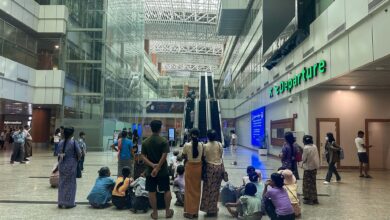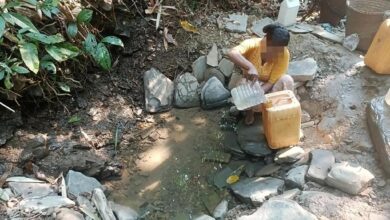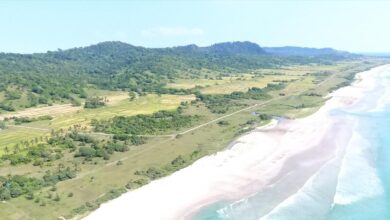
Yu Wai Myint was a cheerful young woman who liked to sing as she worked at her sewing machine. Forced by family circumstances to drop out of school in the eighth grade, the 22-year-old seamstress never seemed to lament her lot in life.
“She grew up mostly under the care of her grandparents and uncles. She was a happy person. She always sang when she was sewing clothes,” recalled her friend Ko Nge.
But Yu Wai Myint’s life took a dramatic turn when, in February 2021, Myanmar’s military seized power. Having spent half of her young life under civilian rule, she had no desire to see her country come under the control of yet another brutal junta. And so she fought back.
At first, the Mandalay native took part in protests to oppose the coup; then, as the crackdowns grew more ruthless, she joined others in setting up a Facebook page to inform fellow activists of the military’s movements in the city.
As an administrator of the “Voice of Mandalay,” or “Vomdy,” page, she was more than just another keyboard warrior. She was also a wanted woman.
She eluded arrest until late last year. Then, on September 4, two military vehicles appeared in front of her home in Mandalay’s Aungmyay Thazan Township.
“Junta troops ordered her uncle and his wife at gunpoint to show them where she lived. When they arrived, some soldiers went up into the house and some remained downstairs to keep watch,” said Ko Nge.
Like many other regime opponents, Yu Wai Myint had two phones—one she used for more sensitive communications, and another as a decoy. After they caught her, the soldiers slapped her around, demanding to know where her second phone was.
“They threatened her, saying she would find out what they’re capable of if she lied about not having another phone,” Ko Nge recalled.
Later that day, pro-junta Telegram channels reported that “a beautiful young woman” was in regime custody and “being questioned with care.” She has not been heard from since.

Mandalay’s dreaded palace
All that anybody knows about Yu Wai Myint’s fate is that she was taken to Mandalay Palace, the site of one of the junta’s most notorious interrogation centres.
Located at the centre of Mandalay’s walled and moated old city, the palace was the residence of Myanmar’s royal family until 1885, when Thibaw Min, the country’s last king, was forced by the British to abdicate and go into exile in India.
Today, it is one of the most feared places in Myanmar. Torture is routine, and the best that one can hope for after being “questioned with care” there is to be transferred to Mandalay’s Obo Prison.
So far, however, there is no evidence that Yu Wai Myint has yet emerged from within the palace walls. There is faint hope, however, that she is still alive.
“I’ve heard that she is still inside and that she has contracted tuberculosis and is coughing up blood. But we don’t know if she’s getting any treatment. We’re just praying that she will be taken to the hospital,” said Ko Nge, citing a military source.
It is not unusual in Myanmar for prisoners to disappear from sight after being taken into custody. The regime releases no information about detainees, so the friends and families of those behind bars have to rely on sympathetic sources within the system to find out what little they can.
“There are many prisoners whose whereabouts are unknown. They do not appear at court, and we don’t know if they are dead or alive,” said Tate Naing, the secretary of the Assistance Association for Political Prisoners (AAPP), which attempts to keep track of Myanmar’s thousands of political prisoners.
Lawyers also have limited access to Myanmar’s detention centres, and often learn disturbing details about how prisoners are treated.
Sexual assault, sometimes ending in murder, is common within Mandalay Palace, according to one female lawyer who spoke to Myanmar Now on condition of anonymity.
“Women are molested and verbally abused, and often raped. Then their bodies are disposed of to conceal the crime,” said the lawyer, who estimated that more than a third of the roughly 1,000 people who have been interrogated at Mandalay Palace since the coup were women.
The case of Aye Nandar Soe
“The most notable case is that of the young woman from Sagaing, Aye Nandar Soe. She was blindfolded and taken outside at night. She never arrived at Obo Prison, and no one is allowed to inquire about her,” said the lawyer.
Aye Nandar Soe was a 21-year-old third-year student at the Sagaing University of Education when she was arrested for her anti-regime activism on September 18, 2021. As president of the university’s student union and a native of Sagaing’s Taze Township, she led protests both on campus and in her home village, where her parents were simple farmers.
She was on her way home from Mandalay when she was dragged out of a bus at a checkpoint on the bridge linking the city to Sagaing, on the opposite side of the Ayeyarwady River. Like Yu Wai Myint one year later, she was taken to Mandalay Palace, and all contact with her has since been lost.

Wai Lin, a close friend, said that it has been more than eight months since anyone has received any news about her.
“We heard that she was severely tortured, and that she was taken out of the interrogation centre one night with some prisoners who were on death row,” he said, explaining that this information came from other Mandalay Palace detainees who had since been released.
“There was no more news after that. Then we heard that she was dead. It has been a year and a half now,” he added, his voice breaking with emotion.
“I still cry whenever I think about her. I miss her very much. She was a very stubborn and reserved girl,” he said.
After taking a moment to suppress a deep sob, Wai Lin continued in a stern voice: “It’s disgraceful that the junta hasn’t released any news about her. They haven’t even told us if she really is dead. It’s an outrage, and I will never forgive them for this,” he said.

Breaking the silence
Many others have died under similarly murky circumstances inside Mandalay Prison, in most cases without any acknowledgement from the regime.
Lin Paing Soe, a student leader from Kyaukse Technological University, is believed to have died inside the interrogation centre within a day of his arrest on September 30, 2021. It took weeks, however, for this news to reach his family.
Another prisoner who has still not been accounted for is Ven. Sandima, an activist monk who was arrested during a raid on Thinzagar Monastery in Mandalay’s Chanayethazan Township on February 9, 2022. Fears for his safety began to grow when he had still not been transferred from Mandalay Palace to Obo Prison more than three months after his arrest. His whereabouts are still unknown, more than a year later.
There is good reason to assume that those who have not been seen since their arrest have been murdered by the regime, according to the lawyer who spoke to Myanmar Now.
“They have been torturing and killing people in plain sight ever since they seized power. It’s even easier for them to do the same to prisoners in their custody and then just dispose of them,” she said.
In January of last year, disturbing reports emerged from Mandalay Palace of three members of the All Burma Federation of Student Unions being tortured by having bamboo sticks thrust inside their rectums. They were reportedly denied treatment for their life-threatening injuries.
The identities of the victims were released with the permission of family members in the hope that doing so would protect them from further abuse. However, it is often an agonising decision for families to go public with their fears about the fate of their loved ones.
According to AAPP’s Tate Naing, there is always the concern that speaking out could result in prolonged detention, or worse. But, he added, it is generally better not to allow these cases to go unreported.
“Their lives will actually be in less danger if their stories come out in the news. And the family may be notified about the prisoner’s whereabouts, or their death, even if this information is never disclosed publicly,” he said.
Remaining silent only allows the regime to quietly make the evidence of its brutal treatment of prisoners go away, he added.
“If a prisoner has been severely injured due to torture, they may decide that the best thing to do is just finish them off once and for all,” he said.



